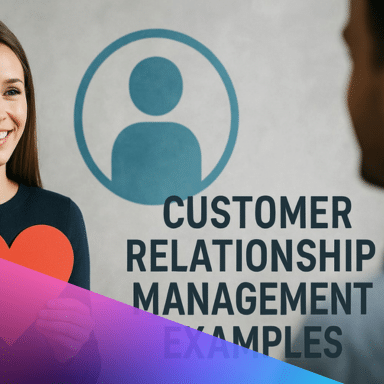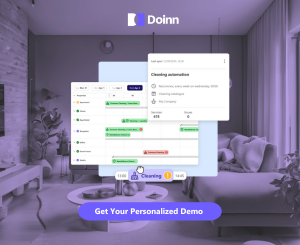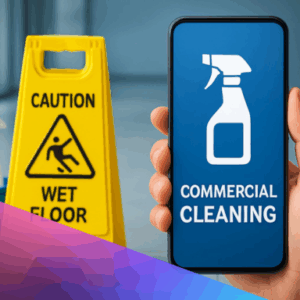8 Inspiring Customer Relationship Management Examples for 2025

The landscape of holiday rental cleaning is evolving rapidly as we approach 2025, with guests and property managers expecting more than just spotless spaces. Medium and large cleaning companies now face the challenge of not only maintaining exceptional service quality but also delivering memorable, tech-enabled customer experiences.
To help your business thrive in this dynamic environment, this article explores eight inspiring customer relationship management examples specifically designed for cleaning services in the holiday rental sector. Discover how automation, personalization, feedback, omnichannel support, and smart technology can elevate your service, drive client loyalty, and fuel business growth. Ready to transform your approach? Dive in and unlock the strategies that will set your company apart.
The Importance of Customer Relationship Management for Cleaning Companies
In 2025, cleaning companies serving holiday rentals are seeing a dramatic shift. While quality cleaning has long been the foundation, today’s holiday rental property managers and guests demand more. Now, the experience matters as much as the spotless result. For medium and large cleaning businesses, delivering both is a tall order.
Holiday rental guests expect seamless, tech-powered service from booking through checkout. They want instant confirmations, real-time updates, and effortless communication. This evolution means that traditional approaches are no longer enough. Companies must now embrace customer relationship management examples that go beyond simple transactions.
Why is this so vital? Data shows that companies using strong customer relationship management examples see up to 27 percent higher customer retention rates. In a crowded market, repeat business and enthusiastic referrals are crucial. According to CRM impact on client retention, CRM systems directly boost loyalty and reputation, leading to more stable, predictable growth.
Medium and large cleaning companies face unique pressures. They must scale operations across dozens or hundreds of properties, often with distributed teams. Maintaining service consistency, tracking client preferences, and personalizing communication are major challenges. Without the right customer relationship management examples, communication becomes fragmented, manual scheduling leads to errors, and it is tough to monitor customer satisfaction at scale.
Here are some common hurdles for these businesses:
- Coordinating schedules for multiple teams and properties
- Ensuring every guest has a tailored, memorable experience
- Responding quickly to last minute requests or complaints
- Tracking feedback and resolving issues before they escalate
CRM technology is no longer a luxury but a necessity. The latest customer relationship management examples empower cleaning companies to automate routine tasks, centralize communication, and analyze data for better decision making. This not only elevates the guest experience but also drives operational efficiency. Ultimately, companies that invest in CRM position themselves to win more contracts, increase referrals, and stand out in the evolving holiday rental market.
| Benefit of CRM | Impact for Cleaning Companies |
|---|---|
| Higher Retention | Up to 27% increase in repeat clients |
| Improved Reputation | More positive reviews and referrals |
| Operational Efficiency | Faster scheduling, fewer errors |
| Personalized Service | Tailored communication and offers |
Moving forward, adopting advanced customer relationship management examples is essential for cleaning companies aiming to thrive in 2025. By combining quality with a memorable experience, these businesses can capture more market share and foster long-term partnerships.

Key CRM Trends and Technologies Transforming Cleaning Businesses
The holiday rental cleaning sector is experiencing a major transformation as new technologies redefine client expectations. In 2025, medium and large cleaning companies must do more than deliver spotless properties. They need to provide seamless, tech-enabled experiences that build loyalty and drive growth. Understanding the latest customer relationship management examples is essential for staying ahead.
AI Automation and Real-Time Analytics
AI-driven automation is at the heart of the most effective customer relationship management examples for cleaning companies in 2025. Smart CRMs can now allocate cleaning tasks, optimize routes, and predict maintenance needs using real-time data. Integrating analytics enables managers to monitor team performance, spot trends, and make data-backed decisions with confidence. As detailed in Technology trends in vacation rentals, combining automation and analytics helps cleaning businesses deliver faster responses, fewer errors, and more personalized services for each property manager.
Mobile Apps and Cloud-Based Solutions
Managing distributed cleaning teams is much easier with mobile-first, cloud-based CRM platforms. These solutions allow supervisors and staff to access schedules, update task statuses, and communicate instantly from any location. For cleaning companies serving multiple holiday rentals or hostels, this approach ensures everyone stays informed and aligned, even across different shifts or properties. Customer relationship management examples in this area show that mobile and cloud tools simplify team coordination and enhance visibility for both clients and managers.
Self-Service Portals and Automated Notifications
The demand for self-service is rising across the hospitality sector. Leading customer relationship management examples now include client-facing portals where property managers can book services, view progress, and access invoices on their own schedule. Automated notifications, sent via SMS or app, keep clients updated about cleaning arrivals or completions without manual follow-up. These features reduce friction, improve transparency, and free up staff to focus on quality rather than repetitive admin tasks.
Data-Driven Personalization and PMS Integration
Personalization is a key differentiator for cleaning companies in a crowded market. Modern CRMs segment clients by property type, service preferences, or feedback to tailor communications and offers. Integrating customer relationship management examples with property management systems (PMS) creates a unified workflow, from booking to reporting. This not only streamlines operations but also reveals new upselling and cross-selling opportunities, helping cleaning businesses boost revenue and customer satisfaction. Companies that invest in these technologies are positioned for sustainable, long-term growth.
8 Inspiring Customer Relationship Management Examples for 2025
Holiday rental cleaning is rapidly changing, and simply offering top-notch service is no longer enough. To thrive in 2025, medium and large cleaning companies must master the art of customer experience. The following customer relationship management examples reveal how automation and technology can help cleaning teams deliver memorable service, streamline operations, and win more business.
These customer relationship management examples are handpicked to inspire and provide actionable strategies. Whether you manage villas, hostels, or a diverse property portfolio, the following use cases show how CRM can be a game changer.
1. Automated Scheduling and Real-Time Communication
Automation is revolutionizing how cleaning companies handle daily operations. One of the most effective customer relationship management examples is using AI-driven scheduling tools that assign tasks based on staff availability, skill set, and property type.
Platforms like Doinn integrate directly with property management systems, automating job assignments and syncing live updates. Mobile apps allow teams and clients to communicate instantly, reducing delays and misunderstandings.
By centralizing schedules and enabling real-time notifications, companies can respond faster, eliminate manual errors, and offer transparency to clients. This approach saves upwards of 40 hours each month and builds trust through clear communication.
For businesses managing multiple properties, automated scheduling is a must-have. The initial setup and training are an investment, but the payoff is significant: greater efficiency and happier clients. For more on how automation can elevate your service, explore these CRM automation for cleaning companies.
2. Personalized Client Experiences Through Data Segmentation
Personalization is at the core of standout customer relationship management examples. By segmenting clients, such as villa owners, hostel managers, or luxury rental hosts, cleaning companies can tailor communications and offerings to each group’s needs.
A CRM system tracks preferences, service history, and feedback, making it easy to send customized checklists or exclusive offers to repeat clients. For instance, villa owners might receive reminders for seasonal deep cleans, while hostels get alerts about rapid turnaround services.
Personalization increases loyalty and opens doors to upsell opportunities. Industry data shows that personalized service can boost client satisfaction by 15 to 20 percent. The challenge is keeping data current, but automated CRM syncing ensures your team always has accurate information.
Medium and large cleaning companies that embrace this strategy stand out in a crowded market, delivering a truly differentiated experience.
3. Automated Feedback Collection and Service Improvement
Gathering feedback is one of the most valuable customer relationship management examples for continuous improvement. Automated post-service surveys and NPS or CSAT requests help companies capture client sentiment at scale.
A CRM can trigger a survey after each cleaning, flag negative responses, and escalate them for quick resolution. This ensures that concerns are addressed before they grow, while positive feedback can be celebrated and shared with staff.
Analyzing survey data uncovers service trends and training needs. Automation makes this process scalable, even for businesses managing hundreds of properties. To avoid survey fatigue, use concise forms and smart timing.
Embedding feedback collection into your CRM routine fosters a culture of excellence and demonstrates your commitment to quality.
4. Omnichannel Support and Seamless Client Communication
Modern clients expect to connect on their preferred channel, whether that is email, SMS, WhatsApp, or in-app messaging. Among customer relationship management examples, omnichannel support stands out for its impact on client satisfaction.
When a client requests a last-minute deep clean via WhatsApp, CRM logs and routes the request instantly. This reduces friction and ensures prompt responses, regardless of the communication channel.
Businesses using omnichannel strategies retain up to 89 percent of their clients. With unified client history and faster issue resolution, medium and large cleaning companies can deliver a seamless experience.
Implementing this requires robust CRM integration, but the payoff is clear: happier clients and a reputation for reliability, especially when serving international or tech-savvy guests.
5. Proactive Service with Predictive Analytics
Proactive management is a hallmark of advanced customer relationship management examples. Leveraging CRM analytics, cleaning companies can predict peak demand and allocate resources in advance.
For example, by analyzing booking patterns, a company can forecast busy weekends and schedule extra staff ahead of time. This prevents service gaps during high season and impresses property managers with consistent reliability.
Predictive CRM reduces overtime costs, improves staff morale, and ensures optimal service delivery. Accurate data input and ongoing monitoring are essential for success.
Large cleaning firms managing fluctuating workloads benefit most from predictive analytics, staying ahead of client needs and maximizing operational efficiency.
6. Quality Assurance with Real-Time Proof of Service
Trust and transparency are vital in customer relationship management examples, especially for holiday rental clients who may not be on site. CRM platforms now enable cleaners to upload time-stamped photos or videos as proof of completion.
For instance, after a cleaning, the team can share before-and-after images through a mobile app, which are automatically sent to the client. This builds confidence, reduces disputes, and demonstrates your commitment to quality.
Real-time proof of service enhances accountability and allows for remote supervision. While staff may need training on new tech tools, the result is a clear competitive advantage in crowded markets.
7. Integrated Upselling and Cross-Selling Campaigns
Upselling is not just for hotels. Among customer relationship management examples, using CRM insights to drive additional revenue is a powerful strategy. By analyzing client behavior, companies can identify opportunities to offer premium services or products.
For example, clients who regularly book standard cleans may receive automated offers for deep cleaning, linen rental, or eco-friendly options. CRM systems track responses and optimize future campaigns.
This approach increases average order value and diversifies income streams. The key is to focus on relevant, timely offers, avoiding spam. Companies looking to expand their offerings find this method both scalable and measurable.
8. Automated Client Onboarding and Education
A smooth onboarding process sets the tone for a lasting client relationship. As one of the most practical customer relationship management examples, automated onboarding workflows guide new clients from signup to their first service.
After a client signs up, the CRM triggers a series of welcome emails, service explanations, and FAQs tailored to their property type. This reduces confusion, clarifies expectations, and minimizes support queries.
Scalable for high-growth companies, automated onboarding is an investment in retention and referrals. Well-crafted content and clear communication ensure every client feels supported from day one.
These customer relationship management examples demonstrate how cleaning companies can combine quality service with exceptional experiences. By embracing automation, personalization, and data-driven strategies, your business can not only meet but exceed the evolving expectations of holiday rental clients.
Best Practices for Implementing CRM in Cleaning Companies
Implementing customer relationship management examples in cleaning companies requires a clear, methodical approach. Many medium and large cleaning businesses excel at delivering high service quality, yet struggle to consistently deliver memorable client experiences. The right CRM strategy bridges this gap, enabling companies to elevate service standards while attracting and retaining more clients.
Step-by-Step Approach to CRM Success
Start with a comprehensive needs assessment. Identify pain points in communication, scheduling, and customer feedback. Involve leadership early to define measurable goals, such as reducing response times or increasing repeat bookings. Selecting a CRM platform that supports automation, real-time updates, and integration with existing systems is crucial for scaling customer relationship management examples.
Once a platform is chosen, develop a detailed rollout plan. Prioritize features that streamline daily operations and support business growth. Assign clear roles for CRM ownership and accountability. Regular check-ins ensure alignment between technology and business objectives.
Integration and Staff Adoption
Seamless integration with property management systems and scheduling tools is essential. This allows for centralized information, fewer manual errors, and better visibility across teams. For insights into choosing the right technology stack, explore this tool stack for vacation rental business guide.
Staff adoption determines CRM success. Opt for mobile-friendly platforms that empower teams to access schedules, update job status, and communicate in real time. Incentivize feedback and provide ongoing training sessions. For more strategies, review employee management software insights, which highlights tools for organizing and motivating cleaning staff.
Data-Driven Optimization and Real-World Example
Continuous analysis of CRM data helps refine customer relationship management examples and boost client satisfaction. Regularly review metrics like response time, task completion, and client feedback. Use dashboard reports to spot trends and adjust workflows quickly.
Consider a cleaning company that implemented CRM to automate scheduling, feedback, and client communication. Within a year, they saw a 25 percent increase in client retention and a notable reduction in service complaints. This demonstrates the tangible impact of a well-executed CRM strategy.
Avoiding Common Pitfalls
While deploying customer relationship management examples, avoid over-customizing the platform. Focus on features that align with business goals instead of adopting every tool available. Underutilized functions and lack of follow-up can undermine results. Schedule regular system reviews to ensure continuous improvement.
Below is a summary table of best practices:
| Best Practice | Description |
|---|---|
| Needs Assessment | Identify business pain points and set clear objectives |
| Leadership Alignment | Secure buy-in and define success metrics |
| Integration | Connect CRM with property and scheduling systems |
| Staff Training | Provide ongoing education and feedback incentives |
| Data Analysis | Use CRM data to optimize customer experience |
| Continuous Improvement | Regularly review and update CRM processes |
By applying these best practices for customer relationship management examples, cleaning companies can transform operational quality into exceptional customer experiences, setting themselves apart in a competitive holiday rental market.
Measuring CRM Success: KPIs and Growth Metrics
Delivering exceptional service is only the beginning for cleaning companies serving holiday rentals. To truly stand out, you need to measure and optimize every aspect of your customer relationship management examples. Data-driven insights reveal what is working, where you can improve, and how to grow your client base.
Key CRM Metrics for Cleaning Companies
Measuring the impact of your customer relationship management examples starts with the right KPIs. Here are the most important metrics for holiday rental cleaning businesses:
| KPI | What It Measures | Why It Matters |
|---|---|---|
| Client Retention Rate | Percentage of returning clients | Indicates loyalty and service quality |
| Average Response Time | Time to address client inquiries | Affects satisfaction and trust |
| NPS / CSAT Scores | Net Promoter & Customer Satisfaction | Gauges overall client experience |
| Upsell Conversion Rate | Success of additional service offers | Drives revenue growth |
| Operational Efficiency | Jobs completed per staff hour | Reflects productivity and cost control |
According to industry research, companies leveraging CRM analytics can achieve 20-30% faster growth. This is especially true for those who integrate technology trends highlighted in technology trends in cleaning industry, including real-time dashboards and automated reporting.
Setting Benchmarks and Tracking Progress
Start by defining clear targets for each KPI. For example, aim to reduce average response time by 30% or boost upsell conversion by 15%. Use your CRM platform to gather baseline data, then track performance monthly. Reviewing these numbers helps you understand which customer relationship management examples deliver the highest impact.
Leveraging Qualitative Feedback
Numbers tell part of the story, but qualitative feedback adds valuable context. Collect testimonials and encourage online reviews after each service. Positive stories from property managers and hosts can validate your improvements, while constructive criticism highlights new areas for growth.
Visualizing and Adjusting Strategies
Modern CRM dashboards give cleaning company leaders a real-time view of all key metrics. Use these tools to spot trends, celebrate wins, and identify bottlenecks. If you notice a drop in NPS, revisit your onboarding or communication strategies. If operational efficiency rises, analyze which customer relationship management examples contributed most.
Conclusion
By regularly measuring and refining your customer relationship management examples, your cleaning business can deliver better experiences, build loyalty, and drive sustainable growth in 2025 and beyond.
As we’ve explored, staying ahead in 2025 means embracing smarter, more personalized ways to manage your client relationships, whether that’s automating schedules, gathering feedback, or creating seamless communication. If you’re ready to see how these strategies work in action and want to discover practical solutions tailored to your property operations, I invite you to take the next step. Let’s make your business more efficient and client-focused together.










